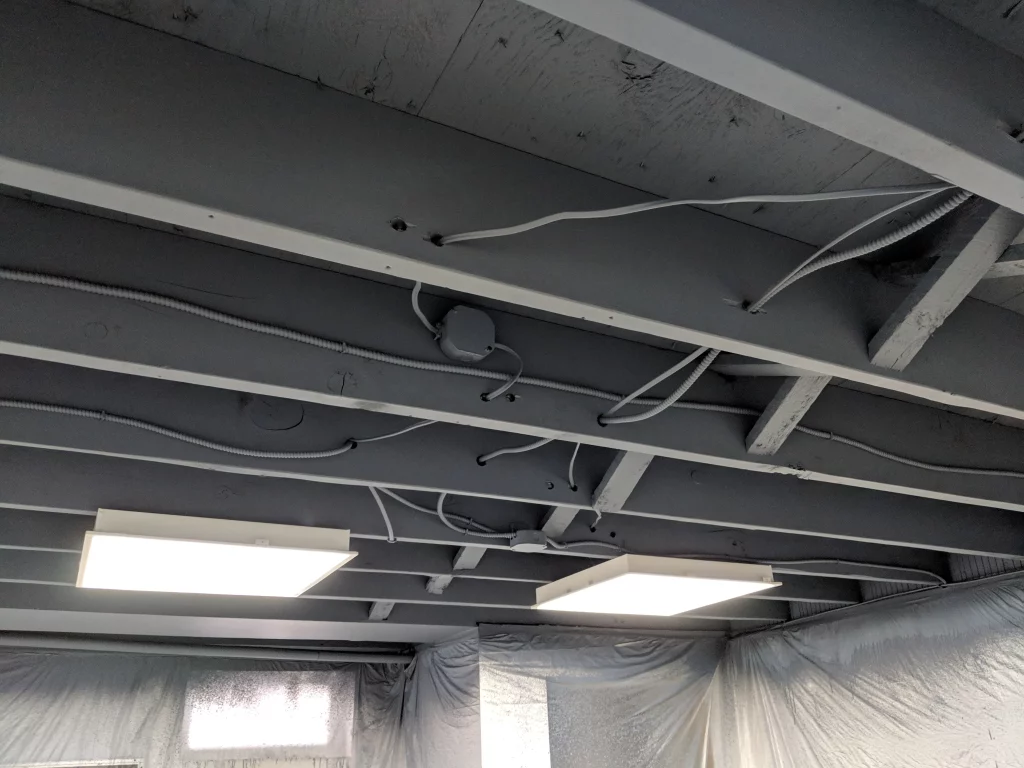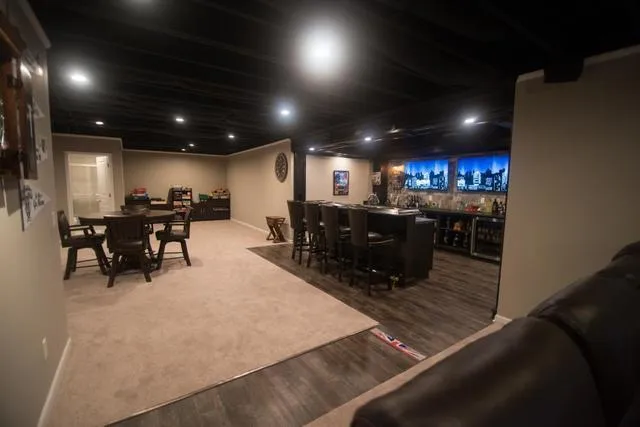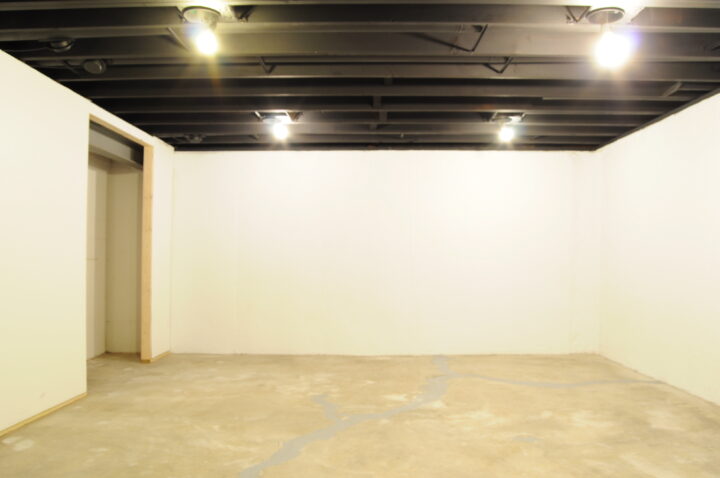Embark on a home improvement journey with “Painting an Unfinished Basement Ceiling” and unlock the secrets to turning a neglected space into a visually appealing and functional area. Discover the transformative power of paint and reimagine your unfinished basement with this comprehensive guide.

Introduction: The Power of Paint – Revitalizing Your Unfinished Basement Ceiling
Often overlooked, the basement holds untapped potential. In this guide, we delve into the world of “Painting an Unfinished Basement Ceiling,” exploring the reasons, benefits, and step-by-step process to breathe new life into your home’s lower level. Whether it’s a playroom, home office, or entertainment space, painting the ceiling can elevate the entire ambiance.
Step-by-Step Guide to Painting an Unfinished Basement Ceiling
*1. Preparation is Key: Cleaning and Inspection
Before picking up a paintbrush, ensure the ceiling is clean and free of dust or debris. Inspect for any signs of water damage, leaks, or structural issues that may need addressing before painting.
*2. Selecting the Right Paint for the Job
Choose a high-quality paint suitable for basement conditions. Consider factors like moisture resistance, mold resistance, and durability to ensure a long-lasting and visually appealing finish.
*3. Gather the Necessary Tools and Equipment
Prepare for the task by gathering essential tools, including a quality paintbrush, roller, painter’s tape, drop cloths, and any additional equipment required for your specific ceiling type.
*4. Applying Primer for Adhesion
Apply a primer to enhance paint adhesion and promote an even finish. This step is particularly crucial for unfinished basement ceilings, as it creates a solid foundation for the paint to adhere to.
*5. Choosing the Right Paint Technique
Explore various paint techniques, such as spraying, rolling, or brushing, to find the one that suits your ceiling’s texture and your desired aesthetic. Consider using a sprayer for efficiency on larger surfaces.
*6. Picking the Perfect Color Palette
Selecting the right color can significantly impact the atmosphere of your basement. Opt for lighter shades to create an open and inviting space, or go bold with contrasting colors for a more dramatic look.
*7. Executing the Painting Process
Follow a systematic approach to painting your unfinished basement ceiling. Start from one corner and work your way across the room, ensuring even coverage and addressing any drips or imperfections as you go.
*8. Drying and Curing Time
Allow sufficient drying and curing time between coats as per the paint manufacturer’s recommendations. This ensures a durable and professional-looking finish.
Benefits of Painting an Unfinished Basement Ceiling
- Enhanced Aesthetics: Painting transforms the raw, industrial look of an unfinished ceiling into a polished and cohesive space.
- Light Reflection: Light-colored paint can improve light reflection, making the basement feel brighter and more welcoming.
- Concealing Imperfections: Paint helps conceal minor imperfections and inconsistencies in the ceiling, providing a cleaner appearance.
Maintaining Your Painted Basement Ceiling
- Regular Cleaning: Keep your painted ceiling looking fresh by incorporating regular cleaning routines to remove dust or cobwebs.
- Addressing Issues Promptly: Promptly address any water leaks or damage to prevent paint deterioration. Regular inspections ensure early detection and swift action.
Read too: Discover the Allure of Hunter Douglas Wood Ceiling Designs: Enhancing Spaces with Elegance
Conclusion: Unleashing the Full Potential of Your Basement
In conclusion, “Painting an Unfinished Basement Ceiling” is a transformative project that can revitalize your home’s lower level. By following this guide, you can turn a neglected space into a vibrant and functional area that complements your overall home design. Unleash your creativity, pick up that paintbrush, and witness the remarkable difference it makes.

